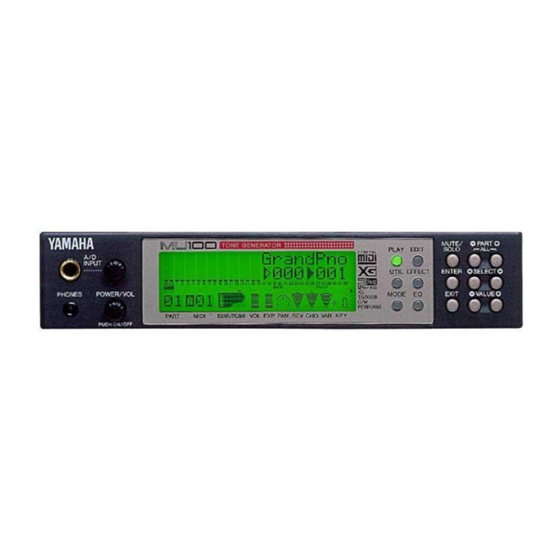
Yamaha MU100 Manuals
Manuals and User Guides for Yamaha MU100. We have 4 Yamaha MU100 manuals available for free PDF download: Owner's Manual, Manuel Du Propriétaire, Supplementary Manual, Service Manual
Yamaha MU100 Owner's Manual (178 pages)
Yamaha MU100 Synthesizer: Owners Manual
Brand: Yamaha
|
Category: Recording Equipment
|
Size: 4.42 MB
Table of Contents
Advertisement
Yamaha MU100 Supplementary Manual (110 pages)
SOUND LIST & MIDI DATA
Brand: Yamaha
|
Category: Recording Equipment
|
Size: 1.53 MB
Table of Contents
Yamaha MU100 Service Manual (38 pages)
TONE GENERATOR
Brand: Yamaha
|
Category: Recording Equipment
|
Size: 3.83 MB
Table of Contents
Advertisement
(French) Yamaha MU100 Manuel Du Propriétaire (178 pages)
Yamaha Tone Generator Owner's Manual
Brand: Yamaha
|
Category: Recording Equipment
|
Size: 4.08 MB



